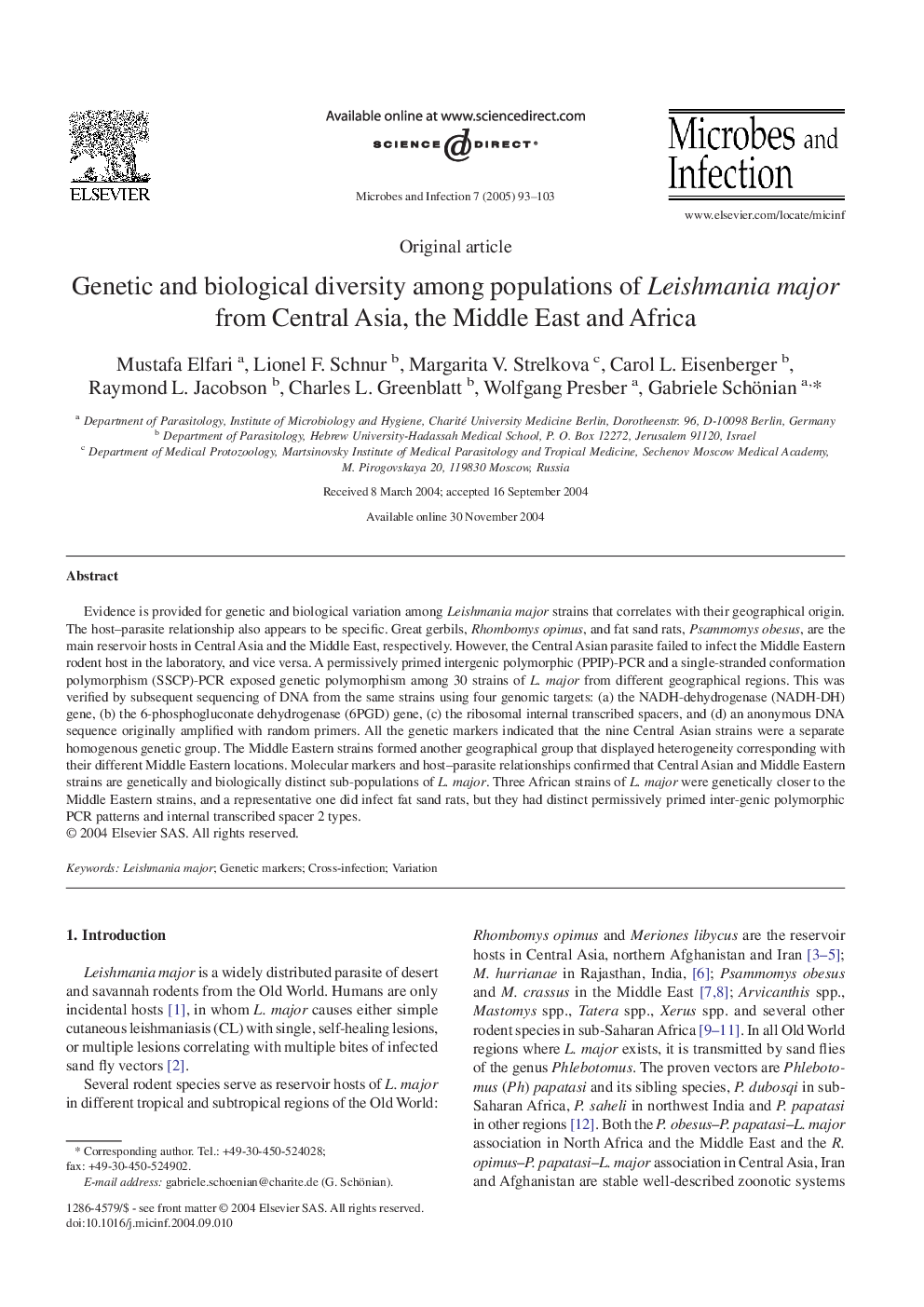| Article ID | Journal | Published Year | Pages | File Type |
|---|---|---|---|---|
| 9283048 | Microbes and Infection | 2005 | 11 Pages |
Abstract
Evidence is provided for genetic and biological variation among Leishmania major strains that correlates with their geographical origin. The host-parasite relationship also appears to be specific. Great gerbils, Rhombomys opimus, and fat sand rats, Psammomys obesus, are the main reservoir hosts in Central Asia and the Middle East, respectively. However, the Central Asian parasite failed to infect the Middle Eastern rodent host in the laboratory, and vice versa. A permissively primed intergenic polymorphic (PPIP)-PCR and a single-stranded conformation polymorphism (SSCP)-PCR exposed genetic polymorphism among 30 strains of L. major from different geographical regions. This was verified by subsequent sequencing of DNA from the same strains using four genomic targets: (a) the NADH-dehydrogenase (NADH-DH) gene, (b) the 6-phosphogluconate dehydrogenase (6PGD) gene, (c) the ribosomal internal transcribed spacers, and (d) an anonymous DNA sequence originally amplified with random primers. All the genetic markers indicated that the nine Central Asian strains were a separate homogenous genetic group. The Middle Eastern strains formed another geographical group that displayed heterogeneity corresponding with their different Middle Eastern locations. Molecular markers and host-parasite relationships confirmed that Central Asian and Middle Eastern strains are genetically and biologically distinct sub-populations of L. major. Three African strains of L. major were genetically closer to the Middle Eastern strains, and a representative one did infect fat sand rats, but they had distinct permissively primed inter-genic polymorphic PCR patterns and internal transcribed spacer 2 types.
Related Topics
Life Sciences
Immunology and Microbiology
Immunology
Authors
Mustafa Elfari, Lionel F. Schnur, Margarita V. Strelkova, Carol L. Eisenberger, Raymond L. Jacobson, Charles L. Greenblatt, Wolfgang Presber, Gabriele Schönian,
